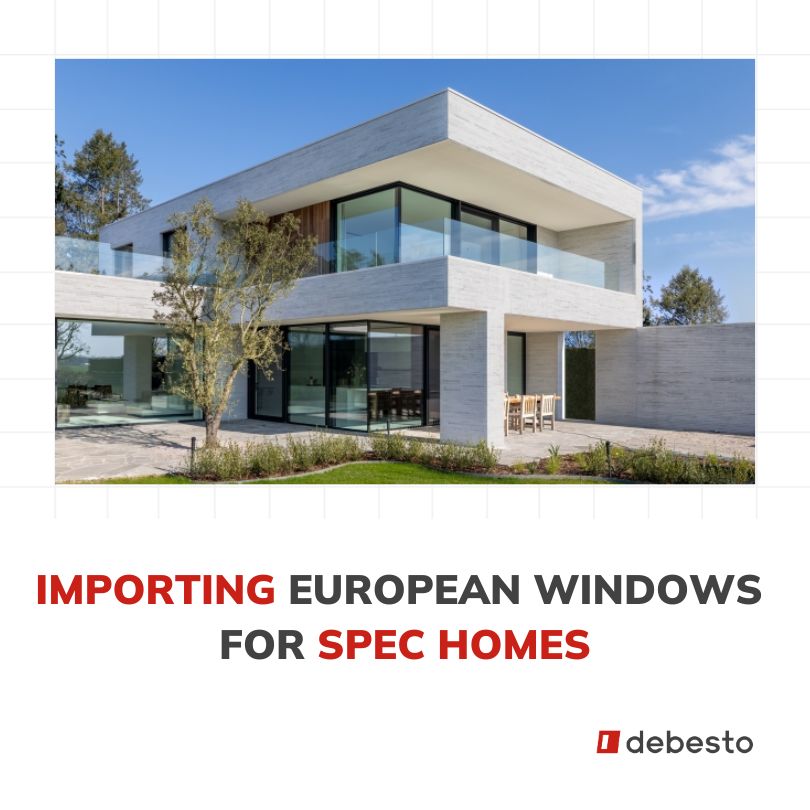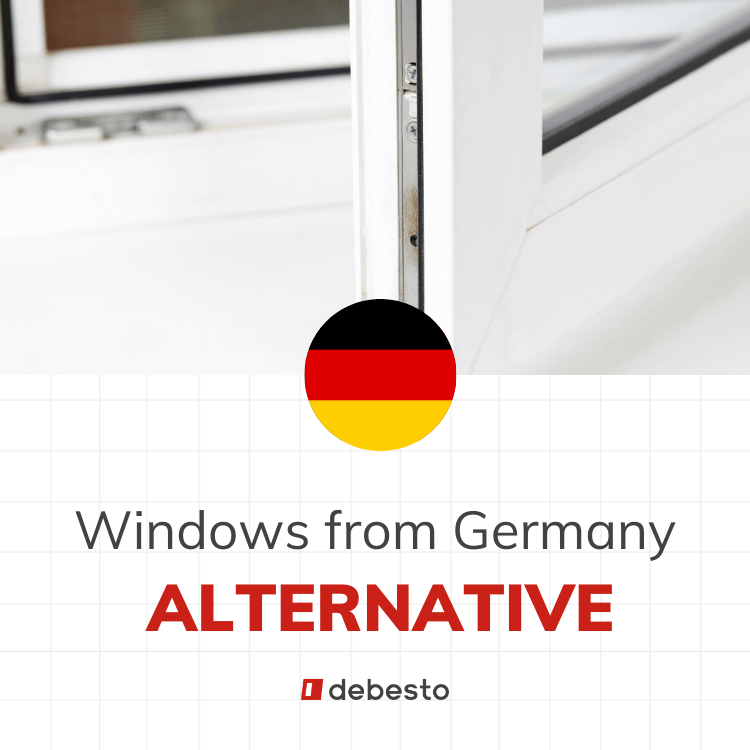Importing Windows from Europe vs Buying Locally in the US (After the 2025 Tariffs)
With new 2025 tariffs disrupting global supply chains and raising costs on imports from Europe and China, many US developers and builders are asking a valid question: “Wouldn’t it be easier to just buy windows locally?”
In this article, we break down when buying from a US supplier (whether a domestic manufacturer or local importer) makes sense — and when it might not.
You may also want to check out an article seeking answers to the question of whether it still makes sense to import windows from Europe in 2025.
Raise your spec home’s value and pay less
Choose European windows over American and save up to 50%
while getting higher-spec units, so homes show better and sell faster.
See dedicated offer for:
Why Local Windows Seem Like the Safer Bet
There are several reasons why US-made or locally available windows can feel like the easier, more convenient choice:
- Faster lead times — standard windows can often be delivered within 1–3 weeks
- Easier communication — same time zone, language, and customer service availability
- No customs or import paperwork — reduced risk of delays and fewer unknowns
- No international freight costs — potential savings on shipping logistics
These are real advantages, especially for projects on tight timelines or when builder teams prefer familiar supply chains.
But What Are the Limitations?
Buying locally is not always the better option, especially if your project requires:
- European-style windows (e.g. tilt & turn, passive house, large-format glazing)
- Higher thermal or acoustic performance than standard American vinyl or aluminum products
- Modern, minimalist aesthetics (slim profiles, concealed hinges, flush finishes)
- Customization beyond standard sizes and colors
And also when at the same time you want to increase profits from the custom home you build.
Most local suppliers in the US offer basic windows with limited functionality, and premium options often come at a much higher price — or require long lead times themselves.
What About Prices at Local Distributors and Manufacturers
In light of the 2025 tariffs, some developers consider sourcing from local European windows importers as a workaround. But in reality, this often doesn’t solve the problem:
- Importers still pay the same tariffs — which means they pass those costs on to you
- You’ll often pay even more through a distributor, since you’re covering both their markup and the original landed cost
So while it may feel easier to buy through a US-based window distributor, it’s not likely to be cheaper — and rarely offers better transparency or control.
Now what about US window manufacturers?
While they do avoid tariffs, it doesn’t automatically make their pricing better. Here’s why:
- Premium American window brands already have high price points for products with energy performance or aesthetics comparable to European systems
- Basic U.S. windows are cheaper, but simply don’t offer the same performance or style
It’s also important to consider how the U.S. market may respond to these tariffs. Historically, U.S. suppliers have increased prices when tariffs reduced competition (as seen in previous trade cases)
Is it likely that local window prices in the U.S. could rise?
It’s worth noting that in similar past cases—like the U.S. steel and appliance (washing machines) tariffs introduced in the early 2000s and again in 2018— domestic manufacturers raised their prices after protective tariffs were applied.
If the same dynamic repeats in 2025, the return on investment from importing European windows could remain steady or even improve as local prices adjust upward.
With the new 2025 Tariffs in place:
- uPVC windows from Poland remain approximately 45%-60% cheaper than comparable US products.
- Aluminum windows continue to offer savings in the range of 35%-50% compared to American counterparts.
For instance, consider a typical spec home project in the U.S. with a window budget of approximately $100,000 using local suppliers.
Importing equivalent high-quality PVC or Aluminum windows from Poland— even with a 25% tariff — could reduce this expense to between $50,000-$65,000.
This represents significant savings of $35,000 to $50,000 per project. Beyond cost advantages, European windows also offer markedly higher build quality, superior energy efficiency, better aesthetics, and advanced functionalities compared to typical U.S. products.
So What’s the Right Choice for You?
Choose local if:
- You need standard-size windows, fast
- You’re working on budget-driven projects that don’t prioritize performance or aesthetics
- Your project timeline doesn’t allow for international lead times
Choose import if:
- You want tilt & turn, large glazings, or custom design
- You’re building premium custom homes or spec homes targeting a higher market segment
- You want European quality and energy performance without overpaying
- You want to smartly increase your margin on your investment by delivering outstanding quality
Looking for a Balanced Comparison?
For premium, custom-built windows required in high-end residential and commercial projects, European solutions remain highly attractive, maintaining cost advantages despite the tariffs. That means that even after tariffs, importing from Poland still is more cost-effective — while offering better quality products, and a modern look.
If you’re on the fence, companies like debesto.com can help you compare European window options with US market standards — so you can choose based on performance, timeline, and total cost, not guesswork.
European Windows for Spec Home Builders
- Save up to 50% – Direct from Poland
- On-site Delivery – Seamless Import
- Installation Support Included
Check dedicated offer for:

FAQ – Local vs. Imported Windows
Is there a chance local windows will be cheaper?
Local windows are not necessarily cheaper—especially for high-end investments. Local distributors are also impacted by tariffs, and American manufacturers remain more expensive than European suppliers while offering lower quality in comparison.
Are US-made windows as efficient as European ones?
Generally no. Due to much stricter regulations in Europe, windows are designed with superior thermal insulation and airtightness, often including triple glazing as standard.
Will local suppliers offer the same design options?
Most don’t. From our conversations with clients, we know that local importers often offer a very limited selection and customization options
Isn’t importing risky?
Not if you work with the right partner. Export-focused firms like debesto.com manage the entire process, including documentation and delivery. Importing European windows isn’t just viable — it can be the smarter choice for developers seeking performance, style, and value. With the right partner, you eliminate risk and gain access to products that elevate your builds.
What about lead time?
If time is a key factor for you, choose local manufacturers. But if you plan ahead and aim for higher-quality windows and additional profits on your investment, import windows directly from Europe.
Related articles in this series:
Chinese Windows vs. European Windows: Where to Buy After the 2025 Tariffs
Italian Windows – How to Cut the Cost After the 2025 Tariffs
Importing Windows from Europe and Trump’s Tariffs: Is It Still Profitable in 2025?









